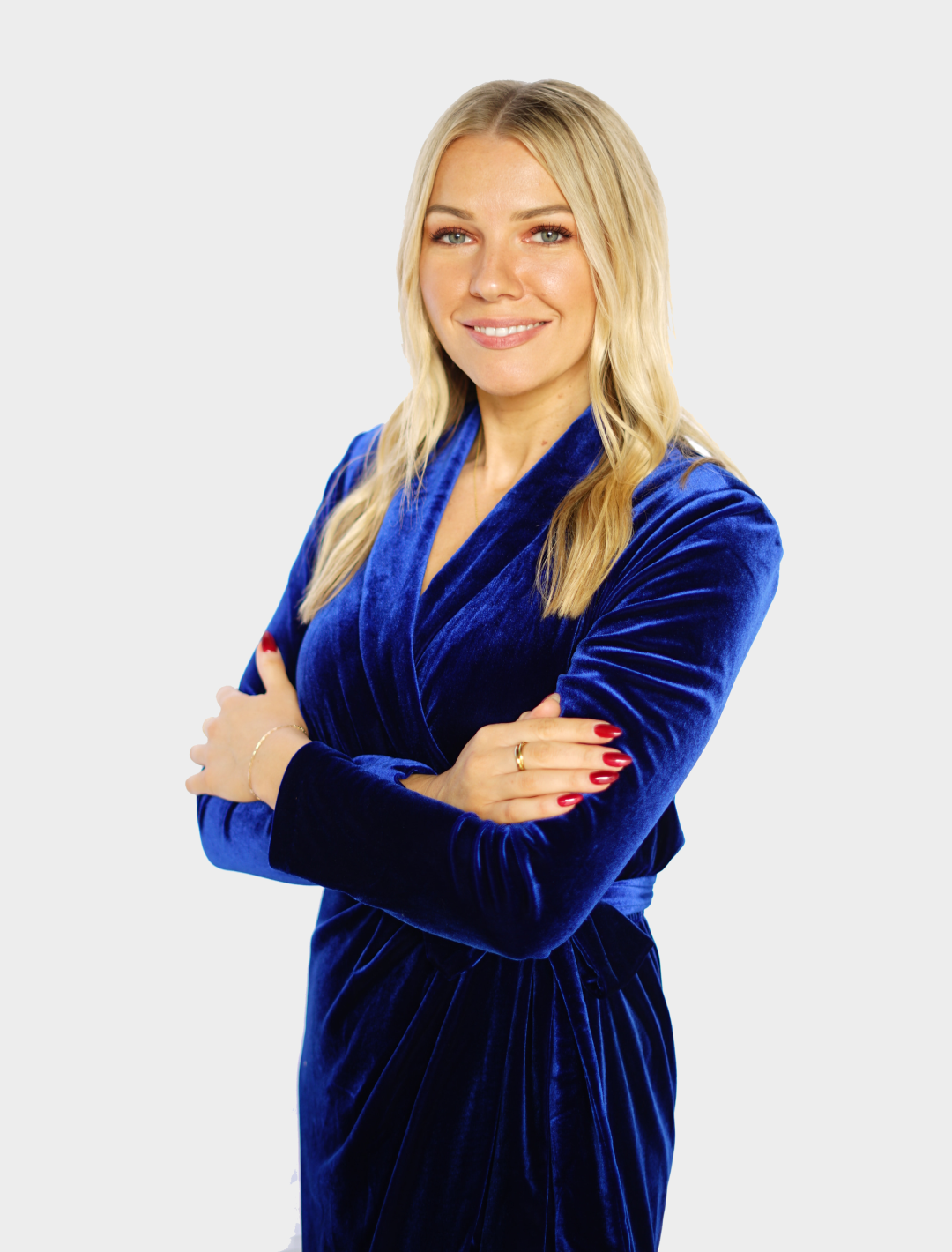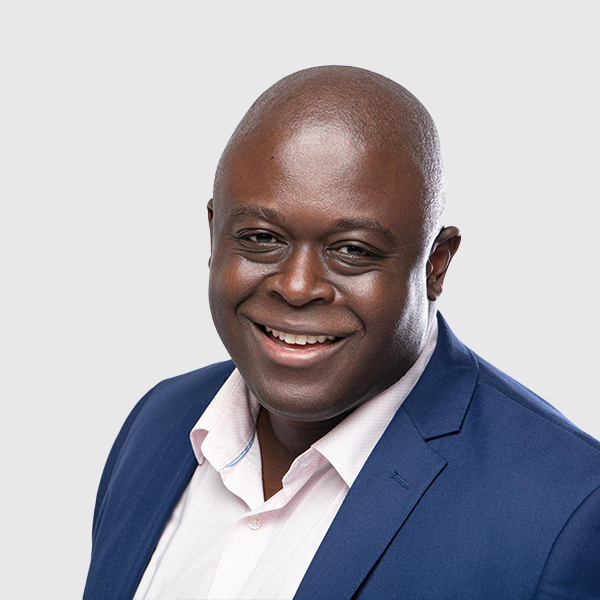PODCAST EPISODE 280 – Thinking Accurately About Money – Part 2
WHAT WAS COVERED
-
-
- 00:00 – Episode begins
- 00:05 – Paul welcomes listeners and explains what the episode is about
- 00:40 – Mister Money Mustache and the simple formula of work-optional lifestyle
- 05:31 – Impact of social security on your capital
- 10:50 – How to invest. Active vs passive management
- 16:30 – Impact of race or age on one’s ability to retire
- 20:53 – Should you put all your money in S&P 500?
- 26:36 – Investing in your ability to earn more income
- 31:10 – Episode ends, thank you for listening.
-
[Tweet “To a great extent, market returns are random and cannot be predicted individually, they can be predicted in a strategy. #YourBusinessYourWealth”] [Tweet “One of the major problems with risk management is there’s almost like a machismo to it like, come on, John, high risk equals high return potential and take some more risk. But the problem is most of that risk is not actually compensated. #YourBusinessYourWealth”]
LINKS
Influential U | Advanced Business Education for Entrepreneurs, Executives and Employees
Curious what you can accomplish with our help? Schedule a free 15-minute meeting with us! sfgwa.com/scheduling
Sound Financial Group’s Website for a Financial Inquiry Call – [email protected] (Inquiry in the subject)
Your Business Your Wealth on Instagram
Your Business Your Wealth on Facebook
Sound Financial Group on LinkedIn
Cape Not Required (Cory’s Book)
Sound Financial Advice (Paul’s Book)
Clockwork: Design Your Business to Run Itself
Loserthink: How Untrained Brains Are Ruining America
SHARE THE SHOW
Did you enjoy the show? We would love it if you subscribed today and left us a 5-star review!
Click this link – Your Business Your Wealth
Click on the ‘Subscribe’ button below the artwork
Go to the ‘Ratings and Reviews’ section
Click on ‘Write a Review’
——————————————————————————————————————————-
0:08
Hello, and welcome to your business your wealth. My name is Paul Adams. This week, we’re going to share with you part two where I appeared on the influential youth focused lecture series, I hope that you guys get a chance to enjoy it. Don’t forget, take some time with this calculator that I’m going to show you, in this series, the link is down below on our website, you’ll be able to get value, you’re going to be able to see what differences and current decisions can have in your long term wealth building. Anyway, I hope you guys have a great week, and I look forward to seeing you soon.
So let’s use this $150,000 person and let’s look what it would take for them to retire successfully. So again, 4465, household income 150. And we’re gonna start by them saving 20% of gross earnings. Why? There’s this article, it is one of the most popular articles on the internet for personal finance. It is by a guy who has a ridiculous name. It’s Mister Money Mustache. If you want to find this article, all you have to do is Google the shockingly simple math of early retirement. And what he does is he just says it is it’s formulaic. There is nothing fancy about it, that the percentage of income you save, starting from zero in this case of his chart, I have no money saved, and I start saving, let’s say 10%, it’ll take me 51 years to have my capital base be able to replace the income I was earning? Well, if I save 20%, it’s still going to take 37 years, you say 40% down to 22 years. Now if somebody can get out there and save 50% You’d be done and 17 Potentially. So this is an article you guys can look at, it just informs one of the mechanics that I know this sounds silly, John, but the more money that you set aside for investments, the more likely you’re going to be able to retire successfully. I know you’re shocked. But what it takes and this is the part people forget what it takes to have enough money excess to put in investments to be able to be financially independent for the sake of a work optional lifestyle. Means you got to say no to a lot out there live. Yep. Right, you need to be where you are right now. So you’re saving 5%. And you got to work with somebody like influential you grow your income and not send any more money to target like or any more money to MasterCard, or Nordstroms, or wherever your Tesla, whatever things you buy, you got to be able to ease off because the only way you can harvest your capital for the sake of your future is if you don’t allow somebody else to harvest it at it. I get a little passionate for my apologies. So no problem 20% income saved now I’ll leave off the income increase again so you guys can see it. And then now we can see that the money actually lasts. So let’s just ease up our pre retirement, what percent we want of our pre retirement income. So somebody setting aside 20%, who just has 150,000, if they started, they had 150,000 from earlier, they start setting aside 20%, they will get to the point they can replace about 50% of their income and have a pretty good likelihood their money will last. Now, some of you may have a question about one of the variables I have up here. And is this expected rate of inflation is two. Now we all know this, especially of late two is insufficient. You know, seven years ago ish. Even like five years ago, it wasn’t that bad. But the reason I used to is if we put in for these numbers become like outrageous in the amount of money it takes etc. To keep it in a way that our brains will absorb and understand it, I suggest to now, so we can see like, hey, it looks like about 1.5 million gets me there to retire successfully at 50% of my income and my capital doesn’t run out. Now I’m going to go back and see I’m married. And counsel security. Look how much better we outperform like that is the value. Like so security if it gives you $20,000 a year. Now we can back in to how much capital that’s worth similar to our retirement plan calculation, which is take $20,000 A year multiply it by 25 that gives you half a million dollars. So if you have $20,000 A year from Social Security It’s the equivalent of having another half a million dollars of capital at work. So now, we might be able to replace more of our income. So 60 Shoot for 75. Right? Yes, we’re getting good here. We might get up to 80. I bet 85 is gonna break it. That’s pretty close. Yeah.
5:29
Take the inflation.
5:31
Man. Yeah, yeah. No, that’s just it is what we want. And why I suggest people do these calculations. First with no security is it can act as a tranquilizer for you to feel like oh, I don’t need to worry about saving as much. But as your income increases, if you’re not redoing the calculation, and you’ll see this in a moment, there’s so security becomes less and less efficient to be actually make a difference in the amount of capital you withdraw every year. So so this is a pause here for a second case, there’s anything from you, John, or something else you want me to change. Otherwise, I’m going to show what the impact is when you make more money.
6:09
I have a couple of quick questions here. So I know that when you have to check the married box in the include Social Security box that things change, I don’t see the calculation. So I don’t know how much of a contribution those things are. Okay, good to going down there and showing me what those contributions might be.
6:27
Those are the definitions, and then you can click on the report. And you will see the investment growth, the contributions, withdrawals, all of it right here. So you will have a really good sense of it. Right? Good, thank you. And then you guys can print that too, if you’d like. So now, we’re going to take off marriage and Social Security here for a moment. And we’re going to just try to replace 40%, just like we did before. But now on a higher income, we’re going to do 400,000. So now we have 400,000 of income. We’re saving 20%. Okay, and we’re our aim is to get to 40. Now, look at that, it looks not too bad. So I’m gonna edge it up just a little bit. 4550 right around here, we’re going to run out. Alright, so that 50% of income replacement runs Me Out Of Money about age 93. Yeah. So now, if I say married and Social Security, it takes the edge off. But now, I’m gonna guess I get nowhere, I can’t get anywhere near 90 plus percent replacement. And it’s because Social Security has a cap to it. And they’re only going to pay up to that cap, because you’re only calculated on, you know, somewhere around $130,000 A year toward your Social Security
8:03
contribution. So now, when you look at the actual mechanics, very dispassionate,
8:11
there’s nobody hitting a fun buzzer. I don’t know if you know this, you were talking about emotional responses, etc. Do you know the producer on the Jim Cramer show that made it you know, that’s the guy that like pushes the buttons and has all the sounds, MSNBC are one of them, you know, whose producer worked for prior now, Jerry Springer. And literally, they did, they took the same formula of emotional engagement, and being over the top and intentionally built that into Jim Cramer’s character, literally wholly for the purpose of getting people emotionally activated for the sake of doing something good or money or to minimum continuing to tune in. Like it is, like, financial industry spends a ton of money, time and research to try to modify our behaviors such that we’ll take action with the products.
9:08
Good. So let’s, let’s do this. First of all, I’ll say this, from my experience with this bleeder calculator in many of these kinds of systems with you play around, that would be one that play around with the calculator, play around with different variables, try this, try that play around, look at the report, see the contribution, see what happens when you do this. Because it starts to open up different pathways or options for how I might move forward and whether or not I’m going to take this action and that action. So first of all, any comments about
9:42
that? From me or the crowd drawn from you know, it is I think you nailed it. And Jeff Miller, my business partner, he’s the guy who man he remembers all Numbers, Social Security Wage bases $147,000. Now
10:07
all right, well, let’s do this. So first of all, I told you before everybody that if you have questions, begin to type them, and so forth. And now you can press and if you’re ready to press down to your questions, and we’ll start to take some questions. And I’m assuming, Paul, that if someone has something very specific, they’d like to ask about a situation, you’d be able to advise them or say something about it. So we will take some questions here from anybody that has one, or do you have a question from Jaime wood, we have another session on how to invest this dye save 20% of the income, how should we invest this money? And that is a great question.
10:50
Let me start by telling you how not to invest. Because like, if somebody’s learning to play chess really well, like they’re getting coaching, the first thing that they learn is how to stop making the bad moves. No need to learn any of the good ones. It’s just like stop doing the stuff that’s getting you defeated. And what I’m going to show you right now is one of the biggest right before I kind of revealed this, John, I don’t know how familiar the audience is with the differences between what’s called active and passive Management. Active Management is somebody trading stocks in an attempt to outperform what the market was going to do anyway. So somebody buys large cap US stocks, they’re trying to outperform the s&p 500, which is the one the index we hear about on the news all the time. And then there’s passive investing where somebody just buys the index, and they sit on it. Now, what I will say is nearly every single instance, and this is a big statement to make, and nearly every single instance, passive will be the traditional Active asset management, I’m going to show you some data on that. In this is a selection for three different time periods. If what you did was you bought a mutual fund, where a manager is actively trading, they are trying to beat the index. Now one of the things we talked about on our show your business, your wealth, or go to YouTube and just search down Financial Group, you’ll find us if what you did is you bought all of those actively managed funds you owned every single one of them. You will not beat the index. What is that 73% of the time, meaning you’ll underperform what the market would have done if it was just left alone, every time minus whatever the fees are on top of it. So AV over 10 years, if you selected 2900, different funds, and bottom all 27% are going to outperform. Oh, by the way, there’s no way to know in advance who it will be, then if you study over 15 years 21%. And if you did it over 20 years, it’s only 17% outperform. And by the way, because the performance is so bad, and they don’t have to disclose anymore, what the funds did, once they close the fund, oh, of all of those funds, only 68% made it to the end of the 10 year period 50 50% to the end of the 15 year period and 44% for the end of the 20 year period. And my last comment I’ll make on this is even if we took just the winners. And this is the craziest piece of information out there, and just speaks to the fact that to a great extent, market returns are random and cannot be predicted individually, they can be predicted in a strategy. But the fact of matter is, if we followed only this 27% Over the next five years, only about 25% are going to outperform the market, even though we only pick the winners because that’s where people say, Well, I’m not going to take the losers, I’m only going to pick the winners. Even the winners have the same random chance of repeating over the next five years.
14:11
All right, great. So one thing not to do is active go past active management, you’d
14:15
be you’d be better off with passive. And then instead of passive, there’s some great tools out there that people can go to directly if they’re not working with an advisor. And I think the robo advisors like Betterment is a great one. You’ve got Wealthfront you’ve got the Charles Schwab, they call it Intelligent Portfolios or something like that as Schwab’s version of it. And what you can do is just select a portfolio that’s going to meet your level of volatility. So again, I speaking directly that question, your volatility is if this is the slope, I hope my money does. It’s not going to do that every year. It’s going to be above it, and below it. And so You need to select a mixture of stocks and bonds. So you look at the past performance of that portfolio. And then you say to yourself, if I had my $500,000 in there, and this 20% downturn happened, and my next statement says, 400, do I lose my stuff? And if you do, then you need to back off the portfolio. People talk about risk management, John, but I think one of the major problems with risk management is there’s almost like, a machismo to it like, come on, John, high risk equals high return potential and take some more risk. But the problem is most of that risk is not actually compensated. Like if we’re golfing and we take somebody, well, that’s I’m going to use the driver and I might shank it into the field. That’s risk with potential compensation. But the way people are investing in the way they’re taking risk is like me going up to a Hells Angel with that golf club and poking him in the chest while saying mean things about his mom, way more. Way more risk that is not positively correlated with good outcomes. Yeah, that is the trouble that many people run into. So well allocated, some of those robo advisors have already fit portfolios, and you just need to look at the past performance and make sure it’s a little volatility you and your family can tolerate. Because it will be selecting a portfolio outside of your tolerance that will put you in the greatest danger of making bad decisions when not if when the market has volatility. All right, good. Alright.
16:30
Let’s continue on. We’ve got another question here. Are there any disparities around retirement for women, or women of color? So anything you want to say about that? Go ahead.
16:42
Yeah, I mean, so if you look at what people talked about with the pay gap, and what they do with the pay gap, as they take all women, all men working full time, divided by whatever, no compensation for time worked in the office, occupational choice men choose to relate to things and those scale better in the way of income. Because if I write an app, now, that’s going to be on millions of devices, whereas if I am a school counselor, I’m counseling one child at a time, it just doesn’t scale. So some differences in income. But it is true that all full time women all full time men, compare just on that have a bout of 27% differential that affects somebody’s ability to save for their future, especially in a society that so many men and women are wrapped up in things like social media that have been out, consume their capacity to be independent. And as a result, so yes, I believe that to be true, I don’t know what the stats are between different races and how they do with their money. But I do know, that first generation people who, whose skin is black, but immigrated from another country, on average, outturn the white people that already lived here. And they also tend to save a lot more than people who were born in the United States. So it just depends, I think, on the culture that was around them, when their value sets around money were created. Good. I want to
18:19
ask one other question that is specific to generations. I’m a boomer, you’re a What what are you? What generation are you?
18:29
I think I’m a Z. But I’m a very grumpy one, John. So I think I get I get like some Boomer cred.
18:37
So I don’t know if you have done any work or have anything to say about different generations and how they are responding to or attending to their money. Is there anything you want to say about that?
18:52
Actually, not specifically about the generations, but it does look like there’s indication that younger people while there is kind of this constant bemoaning of we can’t afford a home. But they’re also making different decisions, like not owning a car. They’re tending to instead of spending the money on consumables, they’re spending it on experiences. Now, one encouraging part about that is that means the things they’re buying don’t like they’re spending on a vacation, they’re not gonna have 20 years of payments on that or eight years of payments on a car. They shouldn’t have gotten things like that. So there’s there’s some hope in that. Oh, thank you. Josh. Just corrected me on Gen X. I don’t even know what I am. So thank you, Josh. But what I think hurts the younger people more is the amount of stuff that’s pushed toward them in marketing on social media and they tend to ground themselves more in I feel good about me. Because of what I think other people think about me and that is dangerous for your finances. That’s great.
20:04
One of the people that work with us, it just turned 23. And so he said, You, you’re smart. You’ve been around for a long time you got any advice for me? And I said two things. I said, one, you have no idea that this is the best body you’ll ever have. So, you know, I
20:21
liked that.
20:23
And he was like, What? No, no, not the future. I said, No, no, no, you know, and then I said, the second thing is, start saving money now start saving money now start saving money now, because I knew from the way he was talking, that saving money was going to be a thing that he started one day someday. So in any case, that’s my little note to generations. Last comment, and then I’m going to move on, is there a reason not to put all investments into the s&p 500 instead of a
20:53
fun? So that’s a no, no, do not do that? I don’t know, you know, but I’m saying, do not put all your money in the s&p 500. Now, you’ll have heard things like Warren Buffett being interviewed and saying, Hey, I think you could do far worse than just putting your money in the s&p 500. You could do much worse. But here’s the part that nobody thinks about. Now I’m going to I’m about to show a set of returns, that for many of you, this is going to look like one of those paintings from the early 90s, where your eyes had to go out of focus. And then you could see the dinosaur, because you don’t do well with columns of numbers. But here’s a bunch of columns of numbers. And what I did is, this doesn’t look too interesting. These are the returns of four different portfolios, historically, and the s&p 500. Okay, over here, I’ve just done a simple formula that then says, How much money would I have in my investments as a result of those returns, but as 100% discipline, I never flinched at volatility. And I just left all my money at meaning I didn’t add any money. I didn’t get the complexity of doing that. That if you put $100,000 into the s&p 500, December 31, of 1999, you know, and then you went out to celebrate the end of the world, like all of us thought that computers were going to fail and hospitals were going to shut down. But now here we go. And we got about 11 years here a performance. And what’s that number stay down there? John, are you able to see that
22:33
pattern? 4005 98? Yep.
22:38
So we grew over 11 years from 100,000 to 104,000. That is 4%. Return
22:47
total? Total? Why did that happen? Because look at the s&p 500 in the late 90s.
22:56
It over performed its historical average. Now, because it’s single index, one asset class can go through a period of time where it significantly outperforms this historical average. The problem is, its historical averages, like an economics grounding, and it’s got to get back to that. So the only way if it overperformed a bunch is it’s got to go through if you want to have fun at a cocktail party throw this out. mean reversion. It has to get back to the mean. Ooh, somebody wrote in Yeah, Kara, good job regression to the mean. I like mean reversion. Sounds fancier I think, whereas if you had a portfolio, that was 70% stocks, but in that you had small cap, mid cap international value more profitable, what you got almost all the stocks in it, okay. Then over that same period of time, your money would have grown by 90%. And that’s with 30%. In relatively low interest short term bonds. It is an exceptional outperformance that can occur. But what’s very easy to do is to look at like those years in late 90s, when the s&p 500 was totally crushing it. Now here’s the problem. Even though mathematically, I do you know, I’m all about full disclosure. Look, if you just held it about another 10 years, your s&p 500 would have been even with that 7030 portfolio, but with a lot more negative years, and it would have taken a decade of the most steely nerve of an investor to sit there and go oh, I got 100 I only got 90 I only got 80 I’m down to 62. No problem, I believe in the SP 500. Now I’m backup data at 993 Ah, finally, my head is above water. Wow. I must actually bumped a button while I was frantically showing things because now it says 108,000 But that is not doable by most investors. And as a result, we have to put ourselves in a position where we have a globally diversified and academically allocated portfolio so that we get exposure to returns and that those assets rebalanced. The rebalancing across asset classes is the reason that that 7030 portfolio outperformed was because every time there was an underperformance of something it rebalanced or an over performance of an asset class, it rebalances, you shouldn’t reallocate is going all the way back to the investment question. Once you set your allocation, if your risk hasn’t changed, if your personal life hasn’t changed, your allocation should not change because there’s something that you think is happening in the world. Because overwhelmingly, if the richest, most successful asset managers in the world can’t consistently or predictably, find where returns are in advance, then we’re not going to have any luck picking which ones can do it in advance. Yeah.
25:57
Good, Paul. We’ve got four or five minutes left, I’m going to do a few things before we wrap up any last thing you want to say about the calculator or connecting with you guys?
26:11
Or connecting with us? Sorry? I know. Yeah. Yeah, people want to get ahold of us, they can reach [email protected] G, like Sam Financial Group way.com. And anybody listening, connect us on LinkedIn will give you some great, some great stuff. Or if you’re an Instagram person, I think I’m asked Paul Adams, on some of these platforms or wealth podcast, if you look for those two, you’ll find us on about every platform.
26:37
All right, we’re really great. You’re free to believe do and say what you want. But you’re not free from the consequences of your naivete, and say this quite often around here. So beware, beware. Make sure that you’re thinking accurately about all of the conditions of life. One of the things who want to do is I wanted to ask you about investing in your own ability to earn more income. You were on, I believe, one of our podcasts or another and answered a question, if I had $10,000, to invest, where would I put it and use it in my own education in my own ability to make more income? Can you tell me about that briefly,
27:21
there is no place you can deploy $10,000 That will make any difference in your retirement. If that’s all he got. Just no chance. So if you can’t multiply it into a lifetime of transacting more effectively and earning more income as a result, such that you can save that, then I’d be like, have a really cool party or a great weekend in Vegas with 10 grand because you’re not going to look at the 10 Grand and then go like Oh my gosh, thank goodness, I keep fuel on my car in retirement, like it won’t be enough for that. Really good. I
27:52
mean, one of the things that is important to know is is that I, if I improve my earning capacity year over year, then I’m going to be a whole heck of a lot better off than if I put that money into some, you know, small investment. All right. As such, we want to make sure that if you are new to influential you that you have access to thrive thrive. It’s our self guided training. Oh, look there, Paul, you are right there from that long ago. event we did on this. So if you don’t know, there are dozens and dozens and dozens of videos in the library that are available like this on specific talk topics, like each of the conditions of life, like all that we teach. So pay attention to it. If you’d like 30 Day access to it, we’re gonna give you that free. Um, you can do 30 days with the coupon code 30 days. And Liz, I believe you just put that into the chat. I’d recommend that you go there and binge, because you can go in there binge for 30 days free and watch a whole bunch of good stuff like this. So do that. But if you want to stick around and hang out with us, we’d love to have you with us on a regular basis. There are weekly e coaching sessions. There’s a whole bunch of content on there. And there’s asked Coach chat is all kinds of opportunities to to use our stuff and use use our resources. The next time that we’re having a focus lectures in June. This one is called the currents of influence. And it’s being led by Marty power and Kirkland Tibbles. So, I said something about the currency before and it’s important to know that it’s just really crucial to understand the force of influence and power. Knowing how to navigate that is important. Curriculum is going to do a lot about the importance of the way we act versus we act. And oftentimes, we’re gotten or grabbed by the current because of our reactions. So in this session, we’re going to talk about how to master the currency templates. And Liz, I’m assuming you put that into the chat already. Thank you so much. So that’ll be in June, pay attention. And then lastly is when this session is over there is survey and feedback. And as always, we do respect and appreciate that you let us know how to be better and better and better in the future. So when we end today, then that will pop right up. It takes take two minutes, and offer some feedback. We’d really appreciate it. Paul, thank you so very much for being with us today.
This Material is Intended for General Public Use. By providing this material, we are not undertaking to provide investment advice for any specific individual or situation, or to otherwise act in a fiduciary capacity. Please contact one of our financial professionals for guidance and information specific to your individual situation.
Sound Financial Inc. dba Sound Financial Group is a registered investment adviser. Information presented is for educational purposes only and does not intend to make an offer or solicitation for the sale or purchase of any specific securities, investments, or investment strategies. Investments involve risk and, unless otherwise stated, are not guaranteed. Be sure to first consult with a qualified financial adviser and/or tax professional before implementing any strategy discussed herein. Past performance is not indicative of future performance. Insurance products and services are offered and sold through Sound Financial Inc. dba Sound Financial Group and individually licensed and appointed agents in all appropriate jurisdictions.
This podcast is meant for general informational purposes and is not to be construed as tax, legal, or investment advice. You should consult a financial professional regarding your individual situation. Guest speakers are not affiliated with Sound Financial Inc. dba Sound Financial Group unless otherwise stated, and their opinions are their own. Opinions, estimates, forecasts, and statements of financial market trends are based on current market conditions and are subject to change without notice. Past performance is not a guarantee of future results.
Each week, the Your Business Your Wealth podcast helps you Design and Build a Good Life™. No one has a Good Life by default, only by design. Visit us here for more details:
yourbusinessyourwealth.com
© 2023 Sound Financial Inc. yourbusinessyourwealth.com
PRODUCTION CREDITS
Podcast production and show notes by Greater North Productions LLC










